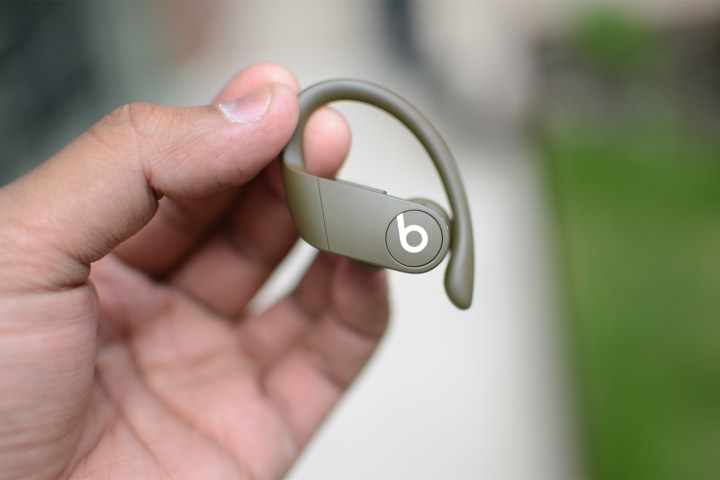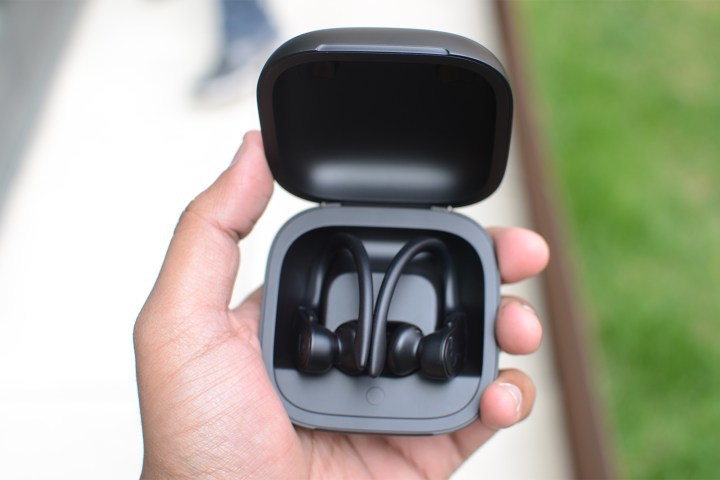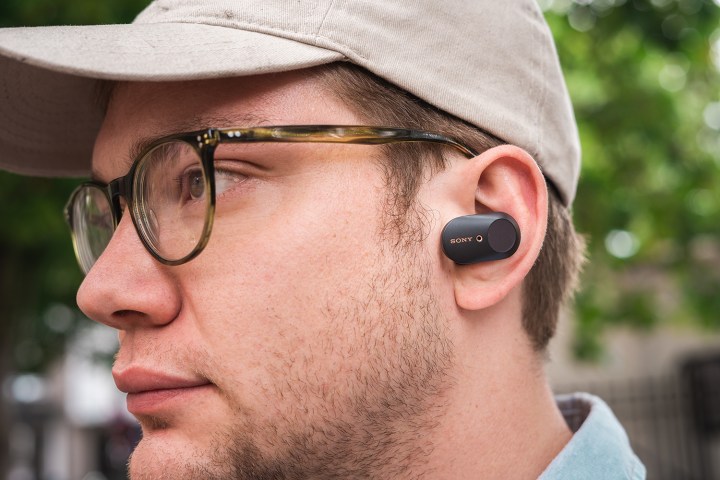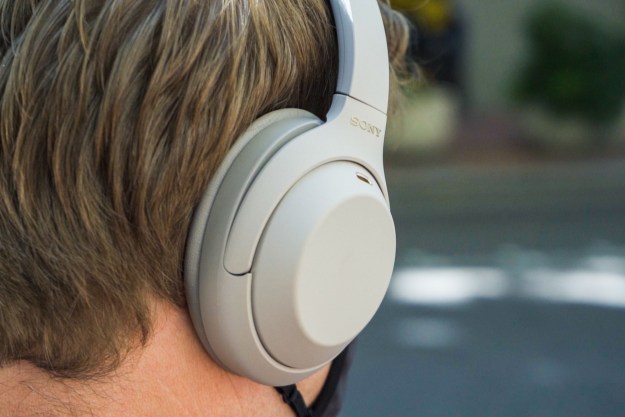A new era of fully wireless earbuds is upon us, and whether you’re looking for something to get you through your daily run or your cross-country flight, there’s a pair out there for you. It’s no coincidence we pointed out those two uses, as the buds we’re comparing in this article — Beats’ Powerbeats Pro ($250) and Sony’s spanking new WF-1000XM3 ($230) — are designed to be pros at those tasks, respectively.
As such, these are very different earbuds. So, why are we comparing them? Because they’re both huge contenders in the category, for one thing, and also because at the prices they’re asking, they should be pros at a whole bunch of things. Below, we’ll tell you exactly which skills each of these pricey pairs of wireless earbuds does best, so you can make an informed decision before you drop over $200. Let’s do this!
Design and fit

Right from the get-go, it’s obvious that Sony’s WF-1000XM3 (yep, it’s a mouthful) are built for the business class (we didn’t’ say snooty), with capsule-shaped shells in sleek matte plastic covers, while the Powerbeats Pro’s over-sized earhooks scream gym rat (or maybe LeBron James). As such, how you plan to use them will determine a lot about what you think about both the look and the fit.
The Sony pair are quite comfortable, stay in fine under duress, and they’re also extremely easy to put in. Meanwhile, the Powerbeats Pro are a bit of a hassle to take on and off and while comfortable, they wear a bit more on your ears over time. But one thing you’ll be sure of is they’re not going anywhere once you secure them — under just about any circumstances.

Not being ones to work out incessantly, we tend to prefer the WF-1000XM3’s more ergonomic design. Still, both pairs fit well and give off an air of quality from the moment you pull them from their charging case.
Speaking of charging cases, both are quite bulky, but Sony’s WF-1000XM3 case is just a bit slimmer (and more stylish), so just by that slight edge, we’ll give Sony the win for this one. Sony’s case really is one of the more stylish ones we’ve seen in a while, big as it is.
Winner: Sony WF-1000XM3
Features and controls

Both earbuds share some great features, including sensors that pause and play music when you pull the buds out, as well as the ability to use just one earpiece at a time — something we’re seeing a lot more often these days.
From there, things start to get pretty different pretty quickly. For one thing, the WF-1000XM3’s marquee feature, impressive noise canceling thanks to the same chip embedded inside their over-ear siblings, is something that completely sets them apart in the category. This is powerful, authentic noise canceling in a tiny earbud, which we really haven’t seen to this point. The WF-1000XM3 also offer the ability to switch to transparency mode so you can hear the world around you, something we wish the pricier Powerbeats Pro included for those high-traffic workouts.
On the other hand, the Sony pair forego any water resistance, while Beats’ latest offer an IPX4 water-resistance rating, meaning they’re essentially splash-proof and should stand up well to even your sweatiest workouts. Sony claims “no complaints” have come in about its previous fully wireless earbuds when it comes to water resistance and/or working out, and plenty of people work out in AirPods which also have zero water resistance, so how much this matters to you may vary.
Sony opts for touch controls for things like song skip, play/pause, and turning on or off noise canceling (though there is no way to raise or lower volume on the buds), while the Powerbeats Pro offer physical buttons in the form of a multifunction key and a volume rocker, which are convenient and easy to use. Both buds have voice assistant access, with the Beats allowing you to simply say “Hey Siri,” while Sony’s pair offers additional features in the app, including EQ and customizable noise canceling options.
While the Powerbeats Pro are pretty loaded, including some great features the WF-1000XM3 don’t incorporate, Sony’s landslide of extras takes the win here.
Winner: Sony WF-1000XM3
Setup/pairing

When it comes to easy setup, nobody beats Apple (there’s a pun in there somewhere), and the Apple-owned Powerbeats Pro are no exception. Pairing is as simple as bringing your phone within the vicinity of the case if you’re an iPhone user, or tapping a button on the case if you’re Android user. In fact, the Powerbeats Pro and their AirPods cousins are perhaps the easiest earbuds to set up on the market.
That is unless you’ve got NFC, of course, which makes the Sony WF-1000XM3 pairable by nothing more than tapping your phone on the case. If you have a phone sans
As such, again by just a hair thanks to easier pairing on either operating system, we’ll give this one to the Powerbeats Pro.
Winner: Powerbeats Pro
Battery life

Battery life is another close one, with some caveats to address. The Powerbeats Pro offer a whopping nine hours of battery life per charge, which is among the best on the market, with extra charges in the case for a total of 24 hours.
The WF-1000XM3 are close to that mark with 8 hours of battery life per charge but also offer three more charges in the case for a total of 32 hours. That figure is without noise canceling, however, arguably their best feature. With noise canceling on, they still get a solid (for fully wireless earbuds, anyway) six hours per charge, with three more case charges for a total of 24.

As with this entire article, it’s a difficult one to judge fairly, so we’re going to waffle and simply call it even.
Winner: Tie
Sound quality

Both earbuds have pretty impressive sound quality for the genre, but we’re going to give Sony the win here for two important reasons. First, we’re not huge bass-heads, and even though we actually quite enjoy the clear and tight bass the Powerbeats Pro offer, we still prefer the more balanced and smooth sound signature of the WF-1000XM3.
Second, thanks to their lovely noise cancellation, Sony’s pair offer a cleaner, more isolated canvas on which to paint their tunes. As such, we’re giving them the clear win.
Winner: WF-1000XM3
Connection
While we realize others have reported no major issues, we tried two pairs of Powerbeats Pro earbuds — on a total of five phones — and experienced more dropouts than we expect from a modern pair of true wireless earbuds, especially at $250.
As for the WF-1000XM3, we’ve yet to experience any connection issues at all so they easily grab the win. (Too bad for the Powerbeats Pro we don’t have a “best name” category.)
Overall
With more features, better sound, incredible noise canceling, and a more solid connection, the Sony WF-1000XM3 are the clear winners in our book. That said, which pair you choose may depend heavily on how you’ll be using the earbuds. If you’re a massive workout fan who runs in the rain and loves big bass, the Powerbeats Pro would appear to be the better choice for you. In the end — as with all things in life — you’ll have to make the final choice on your own.
Editors' Recommendations
- Jabra Elite 7 Pro vs. Sony WF-1000XM4
- Sony WF-1000XM4 vs. Apple AirPods Pro: My new go-to buds?
- Powerbeats Pro vs. Powerbeats3: Which Beats wireless earphones are right for you?
- AirPods Max vs. Sony WH-1000XM4 vs. Bose Noise Cancelling Headphones 700
- Sony WH-1000XM4 wireless headphones are the best Prime Day deal


